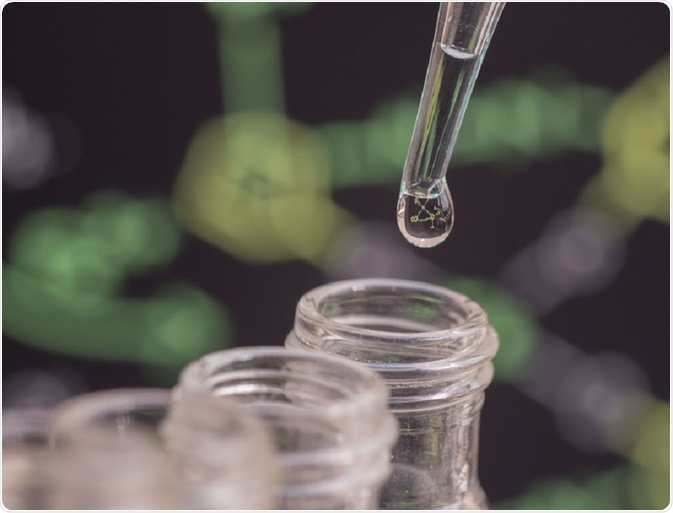Parallel accumulation – serial fragmentation (PASEF) is a spectroscopic technique used during liquid chromatography-mass spectrometry (LC-MS) based proteomics to improve sequencing speed and sensitivity.
 Rueangwit | Shutterstock
Rueangwit | Shutterstock
What is the mechanism of PASEF?
PASEF traps precursor ions eluted during liquid chromatography in a tunnel, where they are accumulated and ordered depending on their collisional cross-sectional area and charge. Precursor ions are held stationary in equilibrium within the tube by opposing electric field and gas flow forces and are eluted by controlled reduction of the strength of the electric field.
This massively improves the sensitivity and speed of LC-MS, as precursor ions of identical species elute in a highly concentrated batch that mitigates the downsides of faster mass spectrometry mass spectra acquisition.
PASEF in shotgun proteomics
Shotgun proteomics is a bottom-up proteomics technique that identifies proteins in a complex mixture using liquid chromatography to separate precursor ions and known data to select precursor ions for fragmentation and analysis by mass spectrometry.
The random nature of shotgun proteomics often obstructs low abundance fragments in a sample containing a high concentration of other fragments, while the data dependent selection procedure may discard precursor ions of investigative value before the fragmentation step. PASEF overcomes these disadvantages as different ions with identical mass-to-charge ratio are further separated by their collisional cross section within the PASEF tunnel.
PASEF in single-run proteomics
Adjusting the elution time of precursor ions in the PASEF tunnel adjusts the number of generated fragments. Slower elution time fragments fewer precursors per PASEF scan, leading to a greater resolution between precursors of differing mobility.
A faster elution time means that fewer precursors pass through the tunnel per scan, though a far larger number of total scans are done during the process. Since precursors accumulate in the PASEF tunnel based on their charge, mass, and cross-sectional area, elution times can be faster without loss of sensitivity and with good signal to noise ratio. LC-MS procedures with PASEF tunnels can acquire many thousands of spectra at ten to twelve times faster rate than regular LC-MS methods.
PASEF with limited sample amounts
PASEF is well suited for small samples. The pre-accumulation of precursor ions into groups to improve the signal to noise ratio, greater separation between species depending on charge, mass, and cross-sectional area, allow PASEF to be highly sensitive even for small sample amounts. Traditional LC-MS methods require 100–200 ng to provide reliable and well-resolved spectra.
With PASEF, protein masses as low as just 10 ng can be used to reliably identify highly abundant proteins in the sample. Typical cells contain approximately 150 pg of proteins, meaning that just 60 cells are enough to generate MS mass spectra. This is ideal in a clinical setting, such as when performing a biopsy of a tumor.
PASEF in quantitative proteomics
Quantitative proteomics determines the concentration of particular proteins in a sample. PASEF improves the ability to determine the abundance of proteins due to a greater number of spectra generated per run, in addition to the reduced incidence of co-elution and co-isolated precursor ions.
Sources
- Expert System for Computer-assisted Annotation of MS/MS Spectra.
- Parallel Accumulation–Serial Fragmentation (PASEF): Multiplying Sequencing Speed and Sensitivity by Synchronized Scans in a Trapped Ion Mobility Device.
- Online parallel accumulation – serial fragmentation (PASEF) with a novel trapped ion mobility mass spectrometer.
Further Reading
- All PASEF Content
- What is Parallel Accumulation and Serial Fragmentation (PASEF)?
- All Protein Analysis Content
- Predicting Protein Function from DNA Sequences
- Structure-based Protein Function Prediction
Last Updated: Jan 17, 2019

Written by
Michael Greenwood
Michael graduated from Manchester Metropolitan University with a B.Sc. in Chemistry in 2014, where he majored in organic, inorganic, physical and analytical chemistry. He is currently completing a Ph.D. on the design and production of gold nanoparticles able to act as multimodal anticancer agents, being both drug delivery platforms and radiation dose enhancers.
Source: Read Full Article
